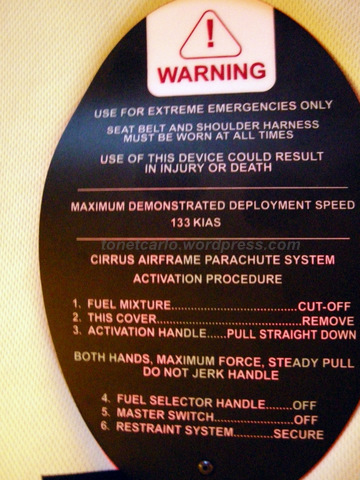Piperboy
Pre-takeoff checklist
- Joined
- Feb 10, 2017
- Messages
- 109
- Display Name
Display name:
Piperboy
My view is pretty simple, and hasn't changed much since I bought my TwinCo. The Cirrus is a fine airplane, very fast, very capable. But it's still a single-engine ship at the end of the day, and the parachute is no substitute for a second engine.
I simply don't fly single-engine airplanes the way I do twins. My mission profile includes distance, IMC, night flying, and the occasional jaunt into high-elevation terrain. I don't feel comfortable doing the latter three in single-engine airplanes. (Call me crazy, especially since I taught full-down autos in helicopters years ago.)
But that's just me. I'm 100 hours short of 11,000 total time. In that relatively short amount of time, I'm one of the only pilots to ever perform a precautionary in-flight shutdown of a Honeywell HTF-7000. I've had a TFE-731-50R blow all of its oil out at FL400. And I've had a -5BR have a similar failure due to a faulty oil o-ring installation. These are some of the most reliable engines ever made, yet the components attached to them failed in such a way that I still needed the other motor to get on the ground safely. Two relatively minor piston "problems" also occurred in that timeframe which caused me to conduct an immediate (on-field) landing. Figure 5 major events in 11,000 hours = one major powerplant-related failure every 2,200 hours. No major issues that money couldn't fix. Had they occurred in a single-engine airplane? Probably wouldn't be the same low-pulse rate results.
Over the years I've relied on the redundancy of other systems my airplane, too. I've had three separate vacuum pump failures (which I realize is starting to be rather old-school these days, but still), and in each case the other pump let me keep on flying with no problems. Had two AI failures (I ran two vacuum AIs in my plane until replacing one with a G5 last year.) Multiple generator failures (again, I have two.) The Cirrus does have some decent redundancy in these departments, but again, one powerplant drives it all.
It's also widely misunderstood just how valuable the drift-down performance is even in underpowered light twins. When you're at cruise altitude you can often choose between airports within hundreds of miles.
I do accept that twins aren't for everyone. The financial aspect notwithstanding (which is ironic, because in this case, it's certainly going to cost you more to own and operate a new-ish Cirrus SR-22 than any Twin Comanche) there must be a commitment to training and proficiency. Some pilots identify that the twin isn't a good fit for them in that department. So I understand and respect the decision of many to stick with singles. It's true, a light piston twin can be a lot to handle.
We both fly professionally, and we both enjoy the benefits of multi-crew flight decks, great training, and great equipment. I can certainly feel the lack of a FO when I'm flying SPIFR in my Twin Comanche. I also miss some of the automation. Once in awhile I even miss my HUD and EVS! It's more challenging, even for someone who flies more than the average GA pilot and has access to the best training known to man. I do like the challenge and I do make it a point to stay current and proficient in my own little airplane, not relying on my day job to keep me sharp. But it does help to live and breathe aviation. I might feel differently about this if I was flying 100-200 hours per year.
I fly my wife and two kids. That's why I fly a twin. I haven't put them in a single-engine airplane since... well, actually, maybe never. I certainly never traveled with them in one.
I feel the same way Rayan. I have flown just over 2000 hours in singles about 30 years ago. I don't think I will ever again fly a single. Been flying twins ever since. I have to have propulsion and system redundancy. At least two engines and everything else. So to me a twin is the only way to go. Not only that, a twin that performs well or very well on one engine.
Many boats mind you have twin engines. Imagine you are in your single engine boat cruising around the Statue of Liberty, the engine quits, and unless an anchor saves your day, you just might drift down the bay, underneath the Verrazano bridge, and into the open ocean, never to be seen again.

